Looming up ahead…
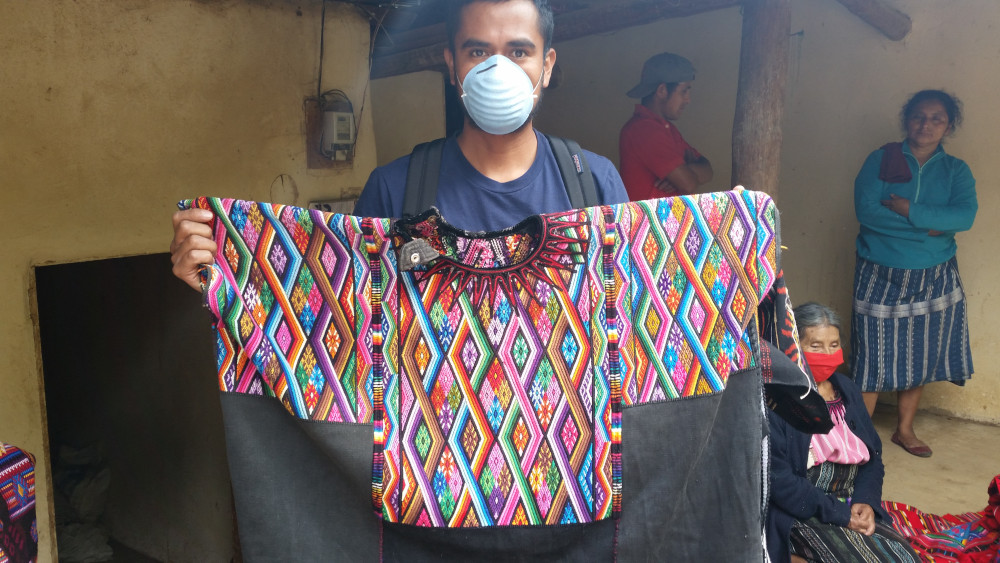
Parts of every trip are spent learning about Maya culture. What better way to learn than by studying the weaving process and learning about the types of looms!
October 31, Day 2, Part 2 — Weaving Process
After we delivered chickens to Karla’s young family, we got to watch her aunt demonstrate techniques on the backstrap loom and then extended family operating a foot loom! We saw how corte material was made on the foot loom and huipiles were made on a backstrap loom. Tammi even had the opportunity to try one on!
Teaching young weavers
Weaving is a technique passed down through the generations, similar to how knit or crochet or needlework have traditionally been done so in the United States. Grandmas are excited to teach granddaughters and are grooming them for the craft as soon as signs of readiness are shown.
In Guatemala, we were told that girls will sit with their mothers (or aunts or grandmas) and begin learning the weaving process, including the designs that typify their family or village, at about age 9. In the case of Karla, she seems not as interested in the moment, instead choosing to focus on more academic endeavors. Her goal in life is to be a lawyer that represents other indigenous women in her community. She commented that she knows of no other attorney that caters to the K’iche’ speaking population of her village.
Her aunt does not mind! Instead, Karla is encouraged to continue working hard at school. “Perhaps she will be ready by age 12” said her aunt.
Huipil construction
Maya women often spend 3-6 months or more weaving one huipil (the top part of a traditional outfit that is put on over the head) and they will wear it for 20-25 years! It is a source of pride and a way to maintain their culture. A woman will often have her own designs, and those designs (both in imagery and color) may reveal to others what village the woman is from or what trade her family works. Other designs share traditions celebrated in the community. For example, birds are usually embroidered on huipiles from Santiago Atitlan.
A huipil (alternately spelled guipil) is usually made in three panels. First, a weaver will make the center panel. Then, the right and left panels are made. Finally, they are sewn together, a hole left for the head and the sides either left open or sewn closed except for the arm holes. The featured photo of this blog post shows Diego holding a completed huipil and it is a good example for illustrating how the huipil is assembled from three panels, a center piece and then a right and left side.
This video provides additional details:
Here are some additional photos that show the backstrap loom, and a video that demonstrates the process of placing and straightening the woven threads.
Working the foot loom
A foot loom is used to make longer, less complicated pieces of woven material. Sometimes table runners are made on them, and oftentimes the corte (skirt) fabric. Operated by foot power, this type of loom produces things faster, perhaps one corte per day. (The corte wraparound piece still has to be embroidered by hand after it is made.) See this foot loom in action!
Assembling full traje, and a modeling opportunity
Once you have a huipil and a corte, you just need a faja (the fabric “belt” that holds the corte in place) and you need to know how to mix and match to make the outfit complete. This video discusses the options and the photos following show Tammi enjoying the opportunity to model the beautiful weaving and embroidery made by the family.
We were lucky to have spent time with the family of one of our sponsored students. We learned about the weaving process using both the backstrap loom and weaving loom. We also got to browse the beautiful selection of woven goods that Karla’s grandmother had already completed. (I purchased a beautiful rebozo, which can be used like a shawl.)

We also received a demonstration on how to wrap a little one to be carried on your back. Although Karla’s little sister was a little big to be carried this way, she really enjoyed playing her part in the demo!

Photo credit : Tammi Poe

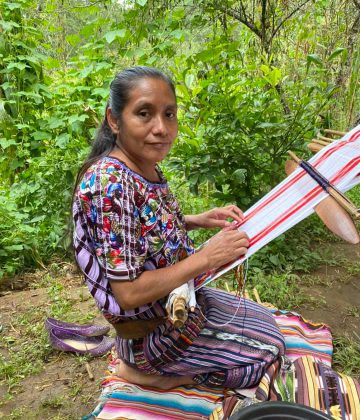
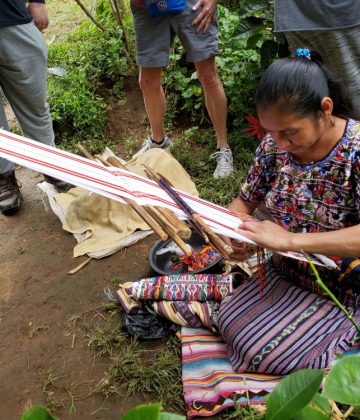
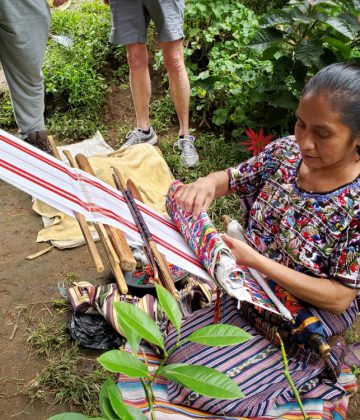
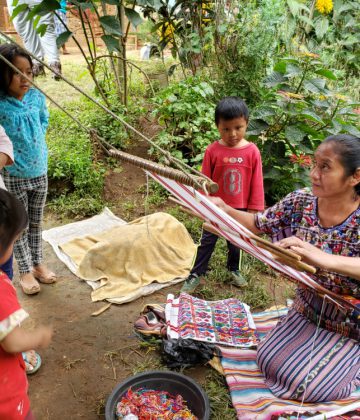



 The “right” opportunity arose when I learned about a travel opportunity for adoptive families which would include volunteer work and cultural sightseeing. Being members of that team had a profound impact on me, Lillian and Andrew. Not only were we able to make a real connection to our son’s birthplace, but we met incredibly warm and generous people, all of whom we now consider to be a part of our “family.” In addition to the volunteer work I shared with the Team, I also was able to “give back” by performing as my alter ego, “Farfel the Clown” at a barbecue for children of The Backyard School. It will remain one the proudest and happiest memories of my life.
The “right” opportunity arose when I learned about a travel opportunity for adoptive families which would include volunteer work and cultural sightseeing. Being members of that team had a profound impact on me, Lillian and Andrew. Not only were we able to make a real connection to our son’s birthplace, but we met incredibly warm and generous people, all of whom we now consider to be a part of our “family.” In addition to the volunteer work I shared with the Team, I also was able to “give back” by performing as my alter ego, “Farfel the Clown” at a barbecue for children of The Backyard School. It will remain one the proudest and happiest memories of my life.
I’m so sorry I missed this! Looks like it was a great demonstration.
Thank you Tammi for trying the outfit on.